My map of my former hometown of Seward, Alaska is now up at they They Draw & Travel. Go check it out here!
Add a CommentViewing: Blog Posts Tagged with: Map, Most Recent at Top [Help]
Results 26 - 50 of 50
Blog: Loni Edwards Illustration (Login to Add to MyJacketFlap)
JacketFlap tags: blog, alaska, projects, map, Add a tag
Blog: Ellis Nadler's Sketchbook (Login to Add to MyJacketFlap)
JacketFlap tags: man, war, animals, people, watercolour, ink, bird, pen, landscape, machine, Nadler, hat, psychology, panels, hand, transport, sword, plane, map, symbol, Add a tag
 As a keen birdwatcher I also record the dreams of individual birds. Here I have painted a typical wading bird's dream.
As a keen birdwatcher I also record the dreams of individual birds. Here I have painted a typical wading bird's dream.
Ink and watercolour 23cm x 9cm. Click to enlarge.
Blog: Ellis Nadler's Sketchbook (Login to Add to MyJacketFlap)
JacketFlap tags: books, dog, animals, people, watercolour, ink, bird, pen, Nadler, fish, boat, architecture, transport, fire, machine, pipe, map, children, Add a tag
 The hero returns.
The hero returns.
Ink, watercolour, pencil. 35cm x 51cm. Click to enlarge.
Blog: Read Now Sleep Later (Login to Add to MyJacketFlap)
JacketFlap tags: bloggers, map, Zeemaps, Add a tag
So for a while now, I've been thinking of making a map of YA book bloggers. I think it would be really useful for authors and publishers wishing to contact bloggers in a particular area--assuming those bloggers want to be contacted. :)
- Locate your area by your closest medium-large to large city--not the place where you actually live. I don't live in Glendale anymore but that's where I started blogging, and I can generally attend events around 60 miles from there.
- Register or Log In to zeemaps.com and place a marker on your City.
- When labeling your marker, please use the same styles as I did:
Name: The name of your blog i.e., Read Now Sleep LaterYou can choose your marker's color :) If your blog has contributors from different areas, you can set up as many markers as you need.
Description: A short blurb about your blog
Email: optional, so you can be contacted<
Blogger/s: name and last initial or nickname
Website: your blog's URL
City: Major to medium city, not the place where you live
Address and Zip: Leave blank, will not display
Media: Image/Audio/Youtube video ID: optional--I used a 200x200 pixel gif.
An administrator must approve each entry.
To link to this map, use http://www.zeemaps.com/220789 or http://www.zeemaps.com/yabkbloggers
Blog: travel and sing (Login to Add to MyJacketFlap)
JacketFlap tags: winter, illustration friday, snow, songs, map, lake, prehistoric, Add a tag
Filed under: map, snow, songs, winter
Blog: travel and sing (Login to Add to MyJacketFlap)
JacketFlap tags: seasons, autumn, winter, summer, journey, stars, map, Add a tag
Filed under: autumn, map, stars, summer, winter

Blog: Ellis Nadler's Sketchbook (Login to Add to MyJacketFlap)
JacketFlap tags: travel, moleskine, cartoon, watercolour, ink, words, pen, landscape, Nadler, panels, sex, map, conceptual, Add a tag

 Slurls are slurred URLs...unintentionally funny web site names which are caused by the removal of spaces from the site name. Now a book by Andy Geldman.
Slurls are slurred URLs...unintentionally funny web site names which are caused by the removal of spaces from the site name. Now a book by Andy Geldman.
My sketches are inspired by the Pen Island site. What were they thinking?
The book also mentions the Speed of Art site, but that name was a deliberate prank by my friend Nigel.
Pen and ink with watercolour. Top A6 size. Bottom 10cm x 8cm. Click to enlarge.
Blog: Ellis Nadler's Sketchbook (Login to Add to MyJacketFlap)
JacketFlap tags: map, books, people, London, words, Nadler, psychology, hand, England, print, Add a tag
For the second time in a week (see earlier post) I find myself featured in an art book about maps. I picked up my copy of The Map as Art by Katharine Harmon at the book launch held at England & Co. My page shows two maps drawn from memory: Australia and USA.
The gallery is currently showing cartographic works by various contemporary artists, including Terry Ryan. Afterwards Terry and I went for a drink with Wasserman and discussed sleepwalking twins, obnoxious curators, triple-decker analytic couches and The Turnip Prize.
Blog: The MJM Books Blog: Featuring all kinds of info you never knew you needed! (Login to Add to MyJacketFlap)
JacketFlap tags: Adventure, Plan, Map, Evacuation, Confusing, Escape, Miscellaneous Thoughts, Choose your own, Flowchart, Add a tag

Can you figure out how to get out of here? Me neither! This was posted in one of the conference rooms at the Intercontinental Hotel in downtown Chicago (I followed Krista on another Staycation!). It reminds me of this flow chart representing all the choices involved in the Choose Your Own Adventure book “Journey Under the Sea”.

If you take a look at the data breakdown, over 75% of all possible outcomes are “unfavorable”, and almost half result in death. That is why this “Evacuation Plan” makes me so nervous! Take another look: choose carefully, because you can’t keep a finger on the page you’re leaving “just in case”…

MJM Books is currently developing an online “Choose Your Own Fairytale” application that will have a much higher success rate and an expanded range of adventure (it’s easier to have more pathways/pages if they’re digital instead of printed). Until then, there is a much lamer wiki that contains non-illustrated COA’s. I tried one and ended up following a duck trying to feed it an oatmeal raisin cookie. Something tells me that not all “adventures” are created equal.
…
Blog: travel and sing (Login to Add to MyJacketFlap)
JacketFlap tags: cats, summer, dogs, river, map, Add a tag
Blog: Sugar Frosted Goodness (Login to Add to MyJacketFlap)
JacketFlap tags: vector, maps, map, Rod Hunt, isometric, animal illustration, pixel art, theme park map, theme park, Add a tag
I recently completed the 2009 visitor's site map for the
Final map with park information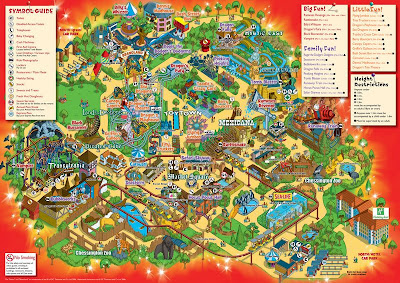
Final artwork
Blog: Ellis Nadler's Sketchbook (Login to Add to MyJacketFlap)
JacketFlap tags: dog, politics, animals, ink, words, machine, Nadler, sculpture, architecture, wheels, print, chimney, shoes, linocut, map, Add a tag
 The latest candidates to join the European Community.
The latest candidates to join the European Community.
Linocut 20cm x 14cm. Click to enlarge.
Blog: Darcy Pattison's Revision Notes (Login to Add to MyJacketFlap)
JacketFlap tags: photos, iPhone, geography, social studies, paperback, lesson plans, Blackberry, map, darcy's books, oliver k. woodman, geographic knowledge, geotagging, social app, Add a tag
You saw it here first! Oliver has a new website and he’s having lots of fun this summer!
Geotagging: A Social App for Geography Fun
 Our knowledge of geography is becoming more sophisticated: If you own a smart phone, like the Apple iPhone 3G or some Blackberrys, the phone will automatically adds geotags – location information – to every photo snapped. But can Americans locate those places on a map? Not likely.
Our knowledge of geography is becoming more sophisticated: If you own a smart phone, like the Apple iPhone 3G or some Blackberrys, the phone will automatically adds geotags – location information – to every photo snapped. But can Americans locate those places on a map? Not likely.
Echoing every major study of geographic knowledge in the U.S. or Great Britain over the last decade, Americans performed dismally on the 2007 Facebook application, “Traveler IQ Challenge.” Out of 193 nations, US players ranked 117th.
2006 surveys indicate that over 70% of US high school graduates couldn’t answer these simple questions correctly (See answers below):
- What is the most commonly spoken native language in the world?
- What is the largest Muslim country in the world?
- What country is the largest exporter of goods and services?
Can Technology Help Teach Geography?
Children’s book author Darcy Pattison says, “I like writing stories for kids that incorporate maps and geography knowledge. I don’t know why I’m drawn to these stories, since I’m not a good navigator. Maybe it’s because maps are a form of storytelling, too.”
The Journey of Oliver K. Woodman, a story about a wooden man who travels across the country to connect a family. In the sequel, Searching for Oliver K. Woodman, Oliver starts cross-country again, but when he’s lost a wooden woman, Imogene Poplar, P.I. searches for him.
It’s not surprising, then, that the main character of her books, Oliver K. Woodman, is the subject of a new Flickr Map Project (www.oliverkwoodman.com/map-project) designed for elementary students.
The Project encourages anyone interested to take a paper Oliver along on their travels and photograph him at landmarks. The key is to geotag the photos and upload them to a Flickr group site: (www.flickr.com/groups/oliverkwoodman).
Geotagging is simply marking a photo as belonging to a specific spot on a map. While smart phones can geotag photos automatically, you don’t need that much technology to participate. In fact, Flickr’s method of geotagging by allowing users to drag-and-drop a photo onto a map is more educational for kids. To correctly geotag, a student must accurately locate a place on a map.
Interactive: Photos + Maps = Better Learning
There are 35 million + photos already on Flickr and even more on GoogleEarth, the other major online photo-geotagging site. Isn’t it enough just to send students to view those geotagged photos? No.
“Geotagging photos is a great interactive tool for learning geography,” Pattison says. “Like other social applications, it depends on the community to generate content. It encourages interest, participation, and facilitates learning.”
Students will be more engaged:
- “Aunt Jane took this picture in Athens, Greece.”
- “I took this photo at the best climbing tree in town.”
- “Our class uploaded and geo-tagged ten photos. Let me show you the one I geo-tagged.”
High interest character. Linking the activity to a favorite children’s book character like Oliver K. Woodman just adds to the fun. Teachers can use the FREE Lesson Plans (zip) available with the project to teach an integrated unit of language arts, math, social studies, art and more. The Oliver K. Woodman Map Project is a small step towards improved geographic knowledge through social apps and is perfect for the elementary school student.
Download the Pattern Now! (pdf)
![]()
Answers to Quiz: 1. Chinese, 2. Indonesia, 3. United States.
Resources:
- Kovanich, Kevin. Facebook app shows students’ lack of geography knowledge. Northern Star, Dekalb, Illinois. September 4, 2007.
- LaGesse, David. ‘Geotag’ Your Digital Pictures: Your digital camera can keep track of your travels for you. US News & World Report, December 18, 2008.
- Lipsett, Anthea. Geography: why in the world do we know so little. Guardian.co.uk, November 19, 2008.
- National Geographic Society. Young Americans Still Lack Basic Global Knowledge, National Geographic-Roper Survey Shows. NationalGeographic.com, May 2, 2006.
Post from: Revision Notes Revise Your Novel! Copyright 2009. Darcy Pattison. All Rights Reserved.
Related posts:
Blog: OUPblog (Login to Add to MyJacketFlap)
JacketFlap tags: Ben's Place of the Week, atlas, Washington D.C., Wall Street, Hudson, inagural, Politics, Current Events, American History, president, Geography, A-Featured, Obama, map, Add a tag
Today the world turned its eyes to Washington, DC where the United States inaugurated its 44th President, Barack Hussein Obama. And while most of our executives have been sworn in here on the banks of the Potomac, our first head of state actually took office a stone’s throw from another river: the Hudson. On April 30, 1789, George Washington took his oath of office in front of a crowd assembled on Wall Street in lower Manhattan. After a long trip from his home in Virginia, he was rowed to New York and walked to Federal Hall, the site of his inauguration and the birthplace of American government. At the time, the city’s inhabitants numbered roughly 30,000, and its homes and businesses did not extend much further than the modern location of Canal Street. Just ten years later, the population of the country’s first capital had swelled to more than 60,000 residents.
 Ben Keene is the editor of Oxford Atlas of the World. Check out some of his previous places of the week.
Ben Keene is the editor of Oxford Atlas of the World. Check out some of his previous places of the week.
Blog: OUPblog (Login to Add to MyJacketFlap)
JacketFlap tags: Geography, A-Featured, maps, map, Prose, quote, Ben's Place of the Week, ode, Geographical Society, George Bellas Greenough, Add a tag
A founding member of the Geological Society of London, George Bellas Greenough also held the highest office in the Royal Geographical Society for two years in the mid-nineteenth century. In his presidential address to the professional body in May 1840, he offered his thoughts on the indispensability of maps. Given my own fondness for atlases, I’m posting an excerpt from his speech today:
Of all the contrivances hitherto devised for the benefit of geography, this [the map] is the most effective. In the extent and variety of its resources, in rapidity of utterance, in the copiousness and completeness of the information it communicates, in precision, conciseness, perspicuity, in the hold it has upon the memory, in vividness of imagery and power of expression, in convenience of reference, in portability, in the happy combination of so many and such useful qualities, a map has no rival. Everything we say or do has reference to place: and wherever place is concerned a map deserves welcome. There is scarcely one department of knowledge; physical or moral, beyond the sphere of its usefulness.
Honestly, I couldn’t agree more.
 Ben Keene is the editor of Oxford Atlas of the World. Check out some of his previous places of the week.
Ben Keene is the editor of Oxford Atlas of the World. Check out some of his previous places of the week.
Blog: OUPblog (Login to Add to MyJacketFlap)
JacketFlap tags: Geography, Batman, A-Featured, Turkey, map, Ben's Place of the Week, atlas, ben keene, Add a tag
Batman, Turkey
Coordinates: 37 55 N 41 5 E
Population: 246,700 (2005 est.)
I suppose in a world that seems obsessed with publicity and brand identity, it was bound to happen eventually. Apparently, in one of the stranger bits of news I’ve come across in the past few weeks, numerous sources reported that the mayor of Batman is actively considering filing suit against both Warner Brothers and director Christopher Nolan for using the name of the Turkish city without his consent. Central to the mayor’s argument is the fact that this city in the predominantly Kurdish part of southeastern Turkey was founded well before the creation of the crime-fighting Caped Crusader in 1939. Now, I have my doubts that this will amount to anything for the capital of Batman Province and the site of the country’s first oil refinery, but it has already led to plenty of jokes about other places that share names with movies and/or comic book characters. Maybe it’s just me, but I like to think that a little good-natured humor can help us learn geography too.
 Ben Keene is the editor of Oxford Atlas of the World. Check out some of his previous places of the week.
Ben Keene is the editor of Oxford Atlas of the World. Check out some of his previous places of the week.
Blog: Ellis Nadler's Sketchbook (Login to Add to MyJacketFlap)
JacketFlap tags: collage, space, ink, Nadler, subconscious, map, Add a tag
 White line. Gap. Twin towers.Rorschach. That sort of thing.
White line. Gap. Twin towers.Rorschach. That sort of thing.
Torn red paper on black paper. 21.5cm x 8.5cm. Click to enlarge.
Blog: Ellis Nadler's Sketchbook (Login to Add to MyJacketFlap)
JacketFlap tags: politics, moleskine, cartoon, ink, words, pen, Nadler, psychology, map, Add a tag

New map of the world, drawn for the "From Memory" brigade.
Pen and ink on Moleskine, digital colour. 9cm x 8cm.
Blog: OUPblog (Login to Add to MyJacketFlap)
JacketFlap tags: Oxford, mexico, myth, Geography, A-Featured, map, Ben's Place of the Week, ben keene, cibola, cíbola, pinpointed, ciudades, cíbula, inexplicably, coronado, Add a tag
For several years now I’ve posted about regions that exist on maps, sites you could visit if you wanted to, places that can be pinpointed with latitude and longitude coordinates. I guess that’s why today I decided on a location fairly described as more myth than reality. In the sixteenth century, Spanish explorers bent on finding riches in the New World convinced themselves that there existed in what is now the southwestern United States, seven wealthy cities they collectively referred to as Cíbola, or less often Cíbula. Inexplicably setting out in the summer heat of 1540, Francisco de Coronado led the long march from Mexico to the area where he expected the cities to be. He was mistaken. “The seven ciudades are seven small towns, all consisting of the [rectangular stone] houses I describe[d earlier].” Of the seven, “each one has its own name, and no single one is called Cíbola,” he wrote in his account to the king of Spain. Today the Cibola National Forest and Grasslands encompass 2,213,591 acres of New Mexico, Texas and Oklahoma.

Ben Keene is the editor of Oxford Atlas of the World. Check out some of his previous places of the week.
Blog: OUPblog (Login to Add to MyJacketFlap)
JacketFlap tags: History, Germany, Geography, A-Featured, Nazi, camp, map, Ben's Place of the Week, atlas, Concentration Camp, Dachau, Munich, memorials, amper, swelled, crematorium, bavaria, attest, Add a tag
Coordinates: 48 15 N 11 26 E
Population: 40,570 (2007 est.)
The old village and sixteenth-century palace here attest to the fact that Dachau, located just north of Munich on the Amper River in Upper Bavaria, has been inhabited for centuries. In spite of such history however, it will forever be remembered as the site of the first Nazi concentration camp. When it was established in March 1933, the former munitions factory held just under 5,000 prisoners but in a little more than a decade, the population had swelled to more than 14 times that number. American forces liberated Dachau on April 29, 1945. Visitors who enter what remains of the walled camp today will find the foundations of numerous barracks, the crematorium, gas chambers, a museum in the main building, and numerous memorials scattered around the grounds.
Ben Keene is the editor of Oxford Atlas of the World. Check out some of his previous places of the week.
Blog: La Bloga (Login to Add to MyJacketFlap)
JacketFlap tags: events, childrens books, Read Across America, multicultural literature, multicultural literature, Add a tag
By René Colato Lainez
Children need to see their faces on books. If a child can see a boy or girl just like him or her on a book, that child will get inspired to create and explore his or her culture and heritage. This is the main goal of these three great multicultural anthologies published by Children's Book Press.
Honoring Our Ancestors: Stories and Paintings by Fourteen Artists. Edited by Harriet Rohmer
This original collection brings together fourteen artists from different communities to honor the ancestors who most touched their lives.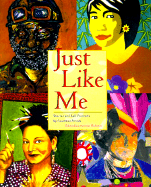 Just Like Me: Stories and Self-Portraits by Fourteen Artists. Edited by Harriet Rohmer
Just Like Me: Stories and Self-Portraits by Fourteen Artists. Edited by Harriet Rohmer
This remarkable collection highlights the art and inspirational paths of fourteen outstanding artists who have shared their art and lives with children. They present self-portraits and brief descriptions that explore their varied ethnic origins, their work, and their feelings about themselves.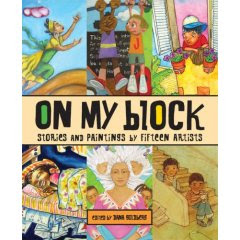 On My Block. Edited by Dana Goldberg
On My Block. Edited by Dana Goldberg
In this lovely homage to neighborhoods everywhere, 15 gifted artists portray the places most special to them. Readers soar from the rooftops of south Brooklyn to the desert of Taos Pueblo, from a basement in San Francisco’s Japantown to a Mississippi Gulf Coast porch. A garden in Mexico overflows with brilliant flowers while one in Tehran hums with the purring of 32 cats. Moving, funny, and unexpected, the stories and images encourage children to explore and observe their own neighborhood and to ask, What is my world? What is my special place?
READS ACROSS AMERICA
Join Borders at ABQ Uptown for special events for Reads Across America weekend on Saturday, March 1, 2008:
1 p.m. – Storytime
Our storyteller will read the new Fancy Nancy book, Bonjour, Butterfly. In her latest escapade, Fancy Nancy’s grandparents show her a thing or two about throwing a truly fancy gala.
2p.m. – Storytime & Signing
Rene Lainez Colato to sign Playing Loteria.
A little boy visits his grandmother in Mexico, and with the help of la lotería, learns a new language and how special the bond between a boy and his grandmother can be.
2p.m. – Discussion & Signing
Ellen Klages to sign The Green Glass Sea.
Set in Los Alamos during World War Two, this coming-of-age novel about friendship and loss at the beginning of the atomic age is a compelling page-turner. Klages brings history to life for the reader with an unusual setting, complex issues, and fearless writing.
2p.m. – Discussion & Signing
Glenys Carl to sign Hold My Hand.
Glenys Carl's life changed for ever with one phone call saying that her son Scott, who was halfway round the world in Australia, had suffered a traumatic head injury and was not expected to live. It was the start of a remarkable journey for Glenys – and for Scott, who survived with his personality intact but could only move one arm. In this inspirational biography, Glenys describes her fight to rehabilitate Scott after the doctors advised that no more could be done to help his mobility and he should be put in a home. A wonderful story about the power of hope, courage, and mother’s love.
Borders is located at 2240 Q. Street NE, Albuquerque, 505.884.7711
Blog: La Bloga (Login to Add to MyJacketFlap)
JacketFlap tags: memoir, Los Angeles novels, multicultural literature, libros bilingües, new releases, Floricanto Press, Add a tag
Mujeres de Conciencia/ Women of Conscience. Spanish English parallel text and photography by Victoria Alvarado. ISBN: 978-0-9796457-7-8. 2008 $69.95 Oversize Hard bound. Especial Holiday advanced purchase for individual customers $49.95. Save $20.00
This is an art book with magnificent black and white photos of prominent Latinas who have made definite and long standing contribution to the Hispanic community and the country at large. This photographic essay constitutes an important collective biography as well, with great journalistic insight and integrity into the lives of leading Latina women in the fields of education, science, literature, business, law, the arts, journalism, politics, and other fields of endeavor. This coffee table monograph, which has been published with art-book quality as a collector's edition, provides stunning artistic, B&W photographs of each subject with a parallel biographic journalistic essay in Spanish and English. The biographies explore the life-changing events of each subject, the personal mix of elements, circumstances, and values which allowed these women to set goals and objectives toward most successful careers and contributions to society. There are 72 leading women included in this collective biography and an extraordinary photographic essay offering the most incredible array of role models to inspire, guide and motivate young Latinas. This title is an important addition to reference collections and individual libraries for they are testament to the vision and values of la mujer Latina.
Operation Familia. By Donna del Oro. ISBN: 978-0-915745-96-8. 520 pages. $24.95
Dina Salazar likes to think she has it together. Dodging the bullet of early marriage and motherhood that every other female in her family has succumbed to, she_s her own woman. Or is she? Is she free ...or just lost?
Adventurous, athletic Dina has a satisfying career and her freedom from emotional entanglements. She has it all. All except the love of her life, Rick Ramos_THE HATED ONE--who ended up marrying another woman nearly six years before. All except the closeness of her blue-collar family, who live in a latino barrio of Salinas, ninety miles south of Silicon Valley. All except the feeling of belonging to her cultural heritage. She speaks Spanish but who is she really? Is she a mixed mutt with an American mind and a latino heart? In her attempts at educating herself and climbing the socio-economic ladder into the middle-class, has Dina lost her latino heart and soul? Then, like an artichoke, Dina begins to peel away the secrets to get at the heart of her family. When Dina learns that her stern, disapproving Mexican-born grandmother has a shameful secret-- a son Grandma Gómez had to abandon in Mexico sixty years before-- Dina is reluctant at first to get involved. The uncle she has never known has died mysteriously-- killed, her grandmother believes, by a rival in the Juarez drug cartel. And Abuelita_s grand-daughter, Teresa--Dina_s Mexican cousin-- is in danger and is on the run. To Dina_s dismay, her grandmother urges HER to find out where her grand-daughter and great grandson are seeking refuge in Mexico. Her grandmother tells her that Dina is the only one that can rescue Teresa and her son, for Dina is the only one who speaks fluent Spanish. What_s a girl to do when la familia calls?
"A delightful, endearing story! You can_t help but root for Dina in her journey of self-discovery."--Brenda Novak, Nationally Best-selling Author
"Dina is a character that many Latinos can identify with a woman trying to weave her own place between cultures. Around Dina, Donna Del Oro has done her own weaving: a heady plot of crime, romance, family conflict and intrigue."
--Carlos Alcalá, Sacramento Bee Columnist
Shadow of the Fathers. By Robert Friedman. ISBN: 978-0-915745-75-3. 2007. $14.95
In Shadow of the Fathers, Robert Friedman turns a disturbing, possibly tragic historical event in Puerto Rico into a captivating work of fiction. Personal obsessions and public events collide as the novel's characters grapple with lies, false identities, puzzling connections, U.S. wars and colonialism. A rich, suspenseful tale, the novel moves from the colorful life of San Juan to the snow-covered streets of New York, from the pastel heat of Miami to the fog-shrouded canals of Amsterdam. Pablo Camino is the son of a doctor sent to Puerto Rico over four decades earlier to research a cure for pernicious anemia. While there, Dr. Cornelius Rhoads claimed in a letter to his close friend, "Ferdie" that he had purposely killed eight of his Puerto Rican patients and planned to exterminate several more of "that degenerate race." The letter was discovered and Rhoads was forced to leave the island. He later insisted it was all a joke. Pablo, a highly regarded Puerto Rican artist, is haunted by his dead father's past. Did the doctor really kill those patients? Has Pablo inherited from him the feelings of murder that often grip his own heart? When Pablo kills an intruder in his home, he vows to finally discover the truth about the father he never knew -and about himself. He flees Puerto Rico to look for Ferdie. Back on the island, Ralph Camacho, Pablo's best friend, carries out his own search into a past that casts heavy shadows on individual lives in the present.
Diadema. Carlos Aceves. ISBN: 978-0-9796457-6-1 $24.95
Carlos Aceves has created an allegorical story rooted in the deepest essence of the Latino soul. Diadema is a symbolic artifice very much like Doña Marina, La Malinche, searching for her child, her very being. Knitted in a true story, Aceves bring forward the Latino imperative of who really are we? What are our roots? This is the Hispanic crucial element of understanding self. Latinos are not alone. Spain if often called by Spaniards "the whore of Europe" for it was invaded by most every group in Europe creating a concatenation of races and cultures; today there are over five different languages spoken there. Latinos to a certain extent inherited this dilemma, and Aceves attempts to use fiction weaved in reality to address the Latino, Chicano predicament of self-preservation and self-understanding. Aceves propounds a clear lyric message begin your journey for genuineness and self-understanding and let the road lead you where it may: "Se hace camino al andar." Roberto Cabello-Argandoña, Editor.
Unamuno: A Lyrical Essay.
By Pedro Blas González. ISBN: 978-0-915745-75-3 $22.95
The most extraordinary and exemplary piece of Latino prose writing, bordering in Rational lyricism. Scholarship and art in Europe, traditionally crisscrossed each other, particularly when the brightest minds where at it. Germany has Goethe, the Hispanic world has Unamuno. Both were consummated philosophers and creative writers, who left indelible marks, both in culture and philosophical argumentation. Goethe's "Werther" is credited with initiating Romanticism in Europe. "El Sentido Trágico de La Vida" ponders the ever-present human (and Hispanic) preoccupation for life, death and beyond, immortality. However, it takes a Latino scholar to analyze, scaffold, and present in an very understandable way to us the grandiosity of Unamuno's philosophical concerns and his scrupulous argumentation. Dr. Pedro Blas González is the first Latino scholar to elaborate and deconstruct Unamuno's philosophical work and related creative writings. This is a lyric work of prose, as well as of literary criticism, philosophical analysis, and pure rigorous Latino erudition advancing Hispanic thinking. Roberto Cabello-Argandoña, Editor.
Waves of Recovery: The Life of an Advocate of Latino Civil Rights. By Maurice Jourdane. ISBN: 978-0-915745-95-1 $26.95
This a riveting personal account of Maurice Jourdane--currently a Superior Court Judge and a member of Jerry Brown's California Attorney General's Office--leading to his legal representation and advocacy for farm workers and César Chávez's organizing efforts. Mo's life reads like a Greek mythic tale in which the hero suffers and endures moral and physical affliction in his quest, his now legendary legal fights and successes against the powerful California growers and agricultural interests in court. This biography is a testament to human strength in behalf of justice for Latinos. The success of César Chávez's civil rights movement and union organizing efforts cannot be fully understood without knowledge of the life and sacrifices of Maurice Jourdane, El Cortito. His legal successes, at great personal costs, solidified Chávez's leadership and prepared the way for the consolidation of the Farm Workers' Union, and ultimately for the farm workers to prevail against the powerful political and economic interests of the California growers. Roberto Cabello-Argandoña, Editor.
Latina Filmmakers and Writers: The Notion of Chicanisma Through Films and Novellas. Jenny Dean. ISBN: 978-0-9796457-1-6. $26.95
During the Chicano Movement in the 1960s and 1970s, Chicanas helped Chicanos achieve equal rights, while at the same time suffered oppression as women within their own race. In the 1970s, the Chicana Feminist Movement was founded to address the specific needs of Chicanas as women of color in the United States. Chicana artists began to write and produce works in which Chicanas were given a proper name, voice, and image. Soon, Chicanisma, a sense of sisterhood and feminist discourse, emerged to confront the triple oppression of race, class, and gender. Latina Filmmakers and Writers: The Notion of Chicanisma Through Films and Novellas examines the works of seven celebrated Latinas who collectively represent a 20-year history of Chicanisma: Chicana (a film by Sylvia Morales), Puppet: A Chicano Novella (a book by Margarita Cota-Cárdenas), La Ofrenda: The Days of the Dead (a film by Lourdes Portillo and Susana Muñoz), Paletitas de Guayaba (a book by Erlinda Gonzáles-Berry), El Espejo/The Mirror (a film by Frances Salomé España) and Loving Pedro Infante (a book by Denise Chávez). These works demystify masculine power and offer realistic portrayals of Chicanas and give them a rightful name, image, and voice in American culture.
"Dean provides a thoughtful and honest account of ... the concept of Chicanisma. Latina Filmmakers and Writers cleverly situates Chicana literature and film at the perilous yet unique intersection of class, gender and race ...and weaves a Chicana feminist theory and original oral history research " Guisela Latorre, University of California. Santa Barbara.
"This book deals with the voices and works of Latinas [whose voices]... must be heard since they elaborate on the concept of "Chicanisma."This is an important new book in the development of Chicana Studies and Latina thought. Kudos!" Dr. Luzma Umpierre, Human Rights Advocate.
"...This book... is a must read text for contemporary society. ...[it] will be most helpful in Chicana and Chicano Studies, Women and Feminist Studies, Ethnic Studies, and Cultural Studies in understanding the experiences and issues concerning diversity in a postmodern situation." Dr. T. Osa Hidalgo de la Riva
Huevos y la Mujer Latina: The De-masculinization of the Macho. Julián Camacho-Segura. ISBN: 978-0-9796457-4-7 $19.95
Huevos is not a politically correct articulation of the plight of Latino men in this era of so called gender equity and diversity. The author contends that while White women have made progress, Latinos, particularly Mexican men, have been entirely ignored; they have become the epitome of the poor working class. Ambitious and upward mobile Latinas often look down upon Latinos, and particularly Mexican males' lackluster economic success preferring other males. Latino males have been left out of any gender or racial discussion, yet suffer the highest work related death rates, lowest college attendance and graduation rates, high incarceration rates, the highest poverty even though they have the highest labor participation rates. The Latino male have become the Sisyphus's of America condemned to low wages by globalization, to ignorance by mediocre, highly-unionized schools, and destined to be marginalized of any equity-political-solution.
The progress of White women has maintained White power by driving the diversity dialog, praxis, and remedy away from Latino males-the working, and uneducated poor. As Latino men have been relegated to a caste style social gender structure-the hard working indigent-Latinas have been blinded into believing that feminism and Chicanisma are positive, weakening Latino traditional social fabric and support system, while simultaneously ignoring the societal divide distressing Latinos, and especially Mexican males. "Huevos! Ya era hora! In an era of such political correctness, the timing couldn't be better. Once again Julian Camacho tackles the issues that are relevant in this truly academic discipline of Latino Studies." John J. Morales Jr. Chair and Professor of Chicano Studies, L.A. Mission College. "Julian Camacho's work is thought provoking and it is bound to create deep conversations and debate. Thank you for addressing the real challenges Mexican men face everyday in US society." Marcos Ramos, College of Letters and Science. University of California, Berkeley "An exciting and enthralling design to educate the body and stimulate the mind. Destined to be one of the most discussed books in 2007!" Oscar Barajas, Author of soon to be realized book "Tales From The Wireless Clothesline"
Clásicos de la Literatura Hispanoamericana Colonial en su Contexto Sociohistórico.
Dr. Clary Loisel. ISBN: 978-0-915745-97-5. $24.95
Esta monografía va dirigida a los lectores que ya tienen un conocimiento básico de la literatura hispanoamericana colonial pero que quieren un análisis más profundo de algunas obras principales del canon. Este libro sobre la literatura colonial constituye un esfuerzo por reunir el testimonio de nueve escritores de los siglos XVI y XVII que han expresado algunas experiencias y vicisitudes principales de varios pueblos de Hispanoamérica para acercarse a su identidad nacional y artística. Seleccioné a estas figuras por sus contribuciones únicas a las letras hispanas. El tema central de este libro es la transformación y la "nativización" de los modelos peninsulares por los escritores del Nuevo Mundo. Es mi esperanza que, volviendo a estudiar a estos autores y obras, podamos comenzar a comprender mejor una pequeña parte de la enorme producción literaria de los dos siglos después de la llegada de Cristóbal Colón en 1492. Divido el libro en dos partes principales: "El Siglo XVI: Literatura de la Conquista" y "El Siglo XVII: El Barroco, Arte Hispánico". Al principio de cada parte hay una introducción sobre el marco histórico-social así como de las corrientes estéticas de cada época. Cada uno de los nueve capítulos se dedica a las biografías y al análisis de la obra de los autores seleccionados: Hernán Cortés, Bernal Díaz del Castillo, Alonso de Ercilla y Zúñiga, El Inca Garcilazo de la Vega, Bernardo de Balbuena, Juan Ruiz de Alarcón, Juan del Valle Caviedes, Carlos de Sigüenza y Góngora y Sor Juana Inés de la Cruz.
"El lector se siente atraído a la lectura de Clásicos de la Literatura Hispanoamericana Colonial por la claridad de su presentación y por la curiosidad de ciertos detalles que me han animado a releer a algunos escritores de la literatura colonial, por ejemplo a Sor Juana Inés de la Cruz". Ramón Corro, Profesor de Español Emeritus; University of Montana.
"Este libro muestra de forma muy clara la transformación de los modelos literarios españoles realizados por diferentes autores en el Nuevo Mundo. Por lo tanto, puede servir como recurso útil para el profesor así como texto de trasfondo para el estudiante de letras renacentistas y barrocas". Robert S. Stone, Profesor Asociado; US Naval Academy.
"Clásicos de la Literatura Hispanoamericana Colonial , por el profesor Clary Loisel, es un aporte importante a los estudios hispanoamericanos coloniales. Es de gran utilidad para un público general y para especialistas". Mark Cox, Profesor Asociado de Español; Presbyterian College.
"Con Clásicos de la Literatura Hispanoamericana Colonial , Clary Loisel ha sabido abarcar las obras claves de la literatura colonial con la precisión y erudición necesarias para el especialista y con la claridad y llaneza para el gran público". Andre Moskowitz, City University of New York Graduate Center
Café Chronicles.
Francisco J. Zermeno. ISBN: 978-0-915745-98-2 $17.95
Life is wonderful, and I have learned from it twice, my first 12 years in México, in Spanish, and the many others in California, in English. I know that every one has a unique life, but I could claim that mine has been a bit more unique. Why? I am a 6'4" café Mexican, that's why! In a land of chaparros, there I was in México. In a land of whites, here I was, and am. I was born in the high sierras, then was transplanted to urban Guadalajara. I survived. Then, I went back to the rural sierra, and this now city slicker couldn't rope a cow, especially in my black shoes. Heck, I tried playing soccer in México.too tall. I tried playing soccer in the USA, there was none in the 1960s. So, when I went into basquetball, my feet were faster than my hands on concrete. Shooting? A slingshot at a bird, ok, but a ball at a basquet? I went to the fields. Have you ever tried short hoeing lettuce or picking strawberries from my height? I had my gringo phase.
Result? I couldn't even convince mother, who kept telling me, 'gringo culo prieto' - with Mexican motherly tender love, of course. I tried to fit in as a Freshman at UCSanta Bárbara. I was taking Bonehead English with Dr. Fernández. I couldn't. Heck, I've even made a run a city politics. Result? Missed it by 1,500 votes. The reason given me? Latinos don't vote. Yes, I wondered if the political machine is just not ready for a 6'4" Mexicaned café to join the elected elite. As a good Mexican, I have always adapted, fatallisticly, as is my, our, nature. Yes, I have always wondered if a caféless, tallless, USAless life would have been different. Yes. I think so. But this one's mine, and I'll keep it. So, what I have been doing is writing, and reading, kilos of words, from the outside looking in. It's been a two year plus weekly column, with what I've observed, with a café Latino consciousness. Some love it and learn from it. Others hate it and have told me to take my culo prieto back to México. Hey, is life wonderful or what? Hope you agree. Live on!
Chat Room & other Latino Plays.
Leo Cabranes-Grant. ISBN: 978-0-9796457-5-4 $22.95
"It gives me great pleasure to introduce Floricanto's New Series: Latino GLBT works. In this edition, we have "The Chat Room and Other Latino Plays" which explores the complexities of Latino gay life through characters and events that challenge our expectations in both funny and disturbing ways. Several closeted men meet in a public space to flirt with each other, but end up discussing the joys and pains of fatherhood. A bisexual man surprises his gay partner with an unusual birthday gift: a Puerto Rican. A Latino-Rican decides to pursue a chat room date with a mysterious man that slowly takes over his apartment and even brings a woman in. All three plays are an invitation to revise our values and to experiment with new identities. " Carlos T Mock, MD "...That's one very important reason why this new line from Floricanto Press exists: to provide Latinos/as and other readers, writers, and interviewers with GLBT writers of quality who will provide significant work about the Latino-American gay experience. Writers like Leo Cabranes, whose plays Floricanto is putting out, in effect, leading the way. Leo addresses the issue: what does it mean to be a Latino-American in the U.S? How does the color of your skin, or your accent, or any of a dozen of perceived differences affect not only how you may be treated-demonized, vilified, adored, iconized-but also how you come to perceive yourself? And how does that change who you become?
In Mortality, the changing and changeable nature of Latino American GLBT identity becomes a toy played with by the characters and the author to express and illuminate the underlying anxiety that this topic always incites. And we've not yet begun to explore other themes of this writing: machismo versus homosexuality, male versus female, and how or even why that should alter to catch up to the rest of the world. Or the role of the various religions-Catholicism versus Santeria for example-that are touched upon in these works. So much to read. So much to think of. Meanwhile welcome to this new line of Floricanto gay Hispanic books. I hope you enjoy the work, as much as I've enjoyed it." Felice Picano
Papi Chulo . Dr. Carlos T. Mock. ISBN Complete: 978-0-9796457-0-9 $24.95
"If self-identity is a crucial issue in this literature, then national identity is what Carlos Mock addresses; and Papi Chulo, actually is the story of a country as seen through the eyes and lives of three strong women of several generations. For Carlos Mock, the theme is felt so strongly that it must be openly expressed. "To Puerto Ricans, I've become an American. But to Americans of Puerto Rican descent, I'm insufficiently Puerto Rican because I've not undergone the years of prejudice they have." So the question becomes, who are any of these characters, these authors, these people? And we've not yet begun to explore other themes of this writing: machismo versus homosexuality, male versus female, and how or even why that should alter to catch up to the rest of the world. Or the role of the various religions-Catholicism versus Santeria for example-that permeates in the novel. So much to read. So much to think of. Meanwhile welcome to this new line of Floricanto gay Hispanic books. I hope you enjoy the work, as much as I've enjoyed it." Felice Picano
Dr. Carlos Mock was born in San Juan, PR in 1956. After a career in Medicine, he turned to literature. Papi Chulo is his third novel. He currently edits Floricanto's LGBT Latino series
Diversity: Mestizos, Latinos and the Promise of Possibilities. By Amardo Rodríguez. 978-0-915745-92-0 $18.95. 152 pages
This book is about the hope that resides in brown, the color of creation. It defines brown ideologically rather than racially. That is, brown is about peoples who are increasingly defying the borders of ethnicity, nationality, sexuality, and race that limit imagination and possibility through various anxieties, insecurities, and paranoia that make us afraid of the world's ambiguity, mystery, and complexity and, in so doing, make us afraid of our differences. It is about peoples who are of borderlands-conceptual, communicational, relational, communal, theoretical, and cultural spaces, such as Spanglish and Ozomatli, which are devoted to possibility. Thus in a world where too many believe in a coming clash of civilizations and that Latino immigration poses the most serious threat to the prosperity of the U.S., this book introduces and expounds on various theoretical notions that make for new visions of the world and ultimately new ways of being the world.
La Gringa
by Pedro Martínez. ISBN: 978-0-915745-94-4. 428 pgs. $25.95
Joe García, a Marine Colonel and childhood friend devoted to the President, La Gringa is also told from multiple points of view that push at the edges of literary tradition.
The deciphering of the Da Vinci Code discovered Jade Stewart as the descendent of the Davidic Dynasty. Her existence threatens the legitimacy of Christian orthodoxy, and she is anathema to the Christian fundamentalists. Beautiful, brilliant and single, she is a controversial and charismatic President at a time of great change in America, including a schism between the American Catholic Church and the Vatican, the admission of English speaking Canada into the United States, and the political emergence of the Mexican-American community. Her election to the Presidency in 2008 is carried on the brown backs of Chicanos in Texas and California.
By the age of fifteen Jade Stewart was uncontrollable, and her wealthy, widowed father, David Stewart, takes her from the family estate in New York to his ranch in South Texas. In Laredo Jade Stewart becomes involved with Beto Guerra, a Chicano mix of Elvis and James Dean. At the age of seventeen, Jade Stewart has a child out of wedlock by Beto Guerra who had enlisted in the Marines and not returned from the wars of the Middle East. The day after the child_s birth, David Stewart tells Jade that her baby boy had died. After her election eighteen years later, President Stewart_s enemies, the terrorist Christian Militias, steal the records of her child_s birth and presumed death. Threatening to charge that the President had had an abortion, they attempt to blackmail her. The President sends Joe García to Laredo to recover the evidence that her child had died the day after birth. Embedded with compelling characters from across the spectrum of the American narrative, La Gringa is an imaginative and disturbing vision of what the future may bring. Sprung tightly by metaphor at the beginning, the plot springs to a violent conclusion, as Joe Garcia follows a trail that skirts taboo, tests his loyalty to the Anglo America of Jade Stewart, and careens towards Monarchy.
Soul Twins: A Latino Journey From The Edge To Self-redemption. By Oscar Vega Romero. ISBN 978-0-915745-93-7. $22.95 162 pages.
Oscar Vega Romero was born and raised in Mexico. He was the second child in a family of six sons and a daughter. His parents, a hard-working laborer father and a home-maker mother, impressed upon him the importance of education and setting a good example. Romero immigrated to the United States in 1998. He is a videographer, an artist, and a writer who uses his artistic talents to teach, entertain, and make others more aware of their hidden potential.
NEW
Latina Mistress.
By R.F. Sánchez 978-0-915745-91-3. 332 pgs. $24.95
This story is about young and pretty illegal alien women in El Paso, Texas, who unknowingly fall or conveniently acquiesce to the sexual demands of their male employers, who most happen to be Anglo Americans. Much what has been written about El Paso and the southwest is about its history, its settlers, its movers and its heroes. Latina Mistress, however, is about ordinary people, illegal aliens, their loves, hates, beliefs, and more importantly their circumstances. The events which take place in the novel intersect the Hispanic and Anglo worlds, with their own good and evil characters. This novel follows the long tradition of historical fiction in the sense that all the anecdotes told here are actually true, although the names have been changed to protect the guilty. The author gathered these very human stories through years of observation as well as personal experience and much research. The author and his wife, Helen, actually knew personally Berta, one of the tragic heroines of this novel. He also interviewed scores of males and females of both cultures attesting to the accuracy of the story. What is a young and beautiful illegal alien to do to survive two alien worlds, the Hispanic and Anglo worlds, with their own good and evil characters? The answer is shivering in its clarity: whatever is required. This novel depicts the dramatic lives of two beautiful sisters, both illegal aliens, and how some people take advantage of their weakness and their sex. In this sense this novel is a classic tale of what has always occurred with the disadvantaged all along; the powerful taking advantage of the weaker and more disadvantaged members of society. Although the novel starts with the arrival of the two pretty young women in the United States, dramatic events unleashed, which change the lives of these women. Some of these circumstances are simply traumatic, others are downright heart-breaking, and some others are happy events, which they must undergo before setting roots in this country. As in real life, not every immigrant coming to the United States makes it, in this novel; Rosario did, but not her sister, Berta. Some characters in this novel are truly loveable, others quite detestable; all nevertheless are quite human. The reader weeps at times, is angry at times, rejoices at times, but at the close you will find a new meaning for what is meant for a Latina Mistress.
Amazon.com Bestseller!!!
NEW
Mosaic Virus.
By Carlos T. Mock, M.D. 9780915745798 $24.95
It is 1983. In Rome, Cardinal Siri, the most powerful Cardinal in the Vatican, summons a young Jesuit priest and assigns him a grave and urgent task. The Vatican has been keeping secret an epidemic of deaths among priests in the northeastern United States. Father Javier Barraza must determine how and why they are dying-and whether a suspected international conspiracy against the Holy Roman Church is coming to fruition. Barraza is an Argentinean who has risen swiftly through the ranks to the post of Devil's Advocate-an investigator of candidates for sainthood. In his new assignment, his path immediately intersects with Lillian Davis-Lodge, a special agent with the FBI, and a compelling figure from Barraza's past. The reappearance of Lillian is more than mere coincidence; she is far from the "special agent" she claims to be. She occupies the highest echelons of power in the United States, with full access to information and influence. Secrets and spies inhabit the subterranean world of the Church just as they do the government of the United States, and a disturbing trail of evidence strongly indicates to Barraza that his Church may be complicit in what he has been assigned to investigate. Set in the arcane, yet alluring world of the Vatican, The Mosaic Virus will grip you in its terrifyingly-true-to-life tale of secrets, sex and violence. At the end, you'll pray that it's only fiction. Carlos Mock's maiden voyage proves he is already a master storyteller.
NEW
Notes From Exile. By T.M. Spooner. 978-0-915745-89-0 302 pgs. $22.95
Rich in language and imagery, Notes from Exile is a skillfully crafted novel. A blend of humor and drama thread this tale, concluding in what can best be described as a haunting modern tragedy. Struggles both large and small remind us of human frailties and how in the final analysis, we go it alone. For its wit and passion, this novel should not be missed! Mexico has long been a land of enchantment and mystery, a place where more than one foreigner has sought refuge, fleeing real or imagined demons. In a quaint village along the shores of Lake Chapala, two recent college graduates join two men living in self-imposed exile. One, a journalist and jaded philosopher is escaping an inherited family destiny; the other, a British combat veteran is fleeing what many viewed an unnecessary war. Notes from Exile is a venerable creation, containing humor, love, and sorrow - each in their own time and measure, all ingredients for a story of escape and hope. Through the novel we learn, often harshly, how each one of us is responsible for defining our destiny. The dilemma is that while some will succeed, others will tragically fail. Excerpt from Notes from Exile - In the vigilant distance, the jacaranda trees and the African tulips remained still and breathless. The long, fragile egrets waded in the muddy shores of the great lake. Lirio acuático, water hyacinth, and tules, water rushes, nursed in the shallow water, their roots a web of thickness and lust. The lake was sick, dying of a disease called neglect. The mountains nestled beside it, powerless to heal, and the long, loping line of the woman cradled it in her lap. She had bravely turned to face the deprivation. Fishers, naked to the waist, cast their wide nets, each harvest more meager. What a disease this thing called neglect.
New
Latina Instinct.
By Michel Estrada. Translated by Robert Nasatir. ISBN:978-0-915745-71-5. $24.95
In Michel Estrada's Latina Instinct, Carmen leaves her modest life in rural Pinar del Río to attend the University of Havana. When she gets there, she confronts the harsh reality of contemporary Cuban life. Latina Instinct is an exceptional document of daily life in today's Havana, faithfully recording the challenging existence of university students struggling to make the grade. Before she can learn from her trials, Carmen must mature amidst the dangerous and complex streets of Havana. Michele Estrada's novel offers the first honest and riveting glance to present-day Cuban urban life.
She attends the University to study computer science but the politics of academic life and the demands of school are quickly upstaged by the excitement and danger of Havana. She rooms with a group of experienced students who teach her how to get along: studious Paula, playful Dunia, naïve Monica, and Lili, the free-spirit. And the men in Carmen_s life are equally important: Arturo, the womanizing fifth-year student, and Sebastián, the debonair Spanish businessman. When Carmen first meets them, she is gullible, but each teaches her a valuable lesson by example, and they are not always good examples. She learns about survival, both at school and in the city, but the most important lessons are those that she can only learn on her own.
Over the course of a year, Carmen encounters good and bad relationships, short-lived and lasting friendships. Her innocence leads her into difficult situations, but her wits, and a little luck, get her out of them. Along the way, Carmen changes from an innocent country girl thrown into the big city to an experienced and savvy young woman equipped to face the challenges of present-day Cuba.
New
Latina Icons: Iconos Femeninos Latinos e hispanoamericanos.
Edited by María Claudia André.La Mujer Latina Series ISBN: 978-0-915745-85-2. $26.95
These articles, written by well-known Latin Americanists, many of them Latinos themselves, reflect a most revealing landscape of iconization of these women ranging from religious, political, and popular sectors. These figures help us understand the complex discursive process of the creation of popular female images, and the influence that institutions and cultural traditions play in their creation. La Malinche, the movie actress María Félix, Sor Juana Inés de la Cruz, María Ilonza, Frida Khalo, Selena, Yemayá, Carmen Miranda, and Malena, the woman object of a most notable Tango, are among the figures discussed in this highly recommended book.
Esta colección de ensayos explora los procesos de representación y de iconización de algunas de las figuras femeninas más prominentes de América Latina. En ella se intenta definir qué significado tienen estas figuras dentro del contexto popular y determinar cuál es la función que desempeñan en la construcción de una identidad colectiva e individual. Los ensayos aquí incluidos presentan un revelador panorama sobre las múltiples articulaciones entre lo religioso, lo político y lo popular que nos permite vislumbrar no sólo la compleja red discursiva que circula a través de los diversos medios de producción cultural, sino también establecer el nivel de participación e influencia que ejercen de los organismos institucionales en la construcción de símbolos, imágenes y tradiciones culturales. La Malinche, la actriz del cine María Félix, Sor Juana Inés de la Cruz, María Ilonza, Frida Khalo, Selena, Yamayá, Carmen Miranda, y Malena, la mujer centro del tango mas famoso escrito, son las figuras femeninas aquí discutidas extensivamente en este extraordinario libro.
Telephone 415-552-1879 FAX 702-995-1410 Postal address 650 Castro St, Suite 120-331, Mountain View, California 94041 Electronic mail General Information: [email protected] Sales: [email protected] Customer Support: [email protected] Webmaster: [email protected]
Lisa Alvarado
Blog: La Bloga (Login to Add to MyJacketFlap)
JacketFlap tags: theater, women of color, women's studies, LGBT, T, Latina performance, performance art, women and performance, Teatro Luna, Tianguis, multicultural literature, Add a tag
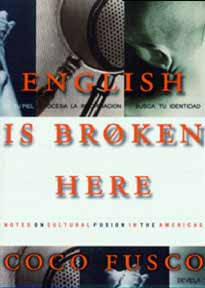
In the essay targeting her collaboration with Gomez-Pena, she details a performance done in public venues (museums, municipal buildings) where she and Gomez-Pena created a living exhibit, posing as “specimens” of a fictional indigenous tribe. They displayed themselves in a cage, with dress and talismans gleaned from Pan-Latino/a and popular culture. Her commentary on the experience, on being the observed ”other,” and what she saw as the fascination of the predominately Anglo audience as observer, underscored the themes of objectification and the blurring of public and private.
I had mixed feeling in reading about this performance. On the one hand, I think it was a bold and important artistic move to skewer the dominant culture's idea of 'preservation' and 'curation ,' to challenge it as a kind of pandering to that culture's fascination with they perceive as the 'exotic' indigenous. Never mind that in many cases, these exhibits are only possible as a direct result of colonialism, genocidal practices, and grave robbing. How different is Fusco's and Gomez-Pena's living exhibit behind bars from the guided tours held on the the rez, or in barrios, in farm worker camps?
I wonder to what extent the audience grasped that under the rubric of "Latino," there exists hundreds of complex societies, with a heterogeneity of language, practices, rituals. I'm concerned that the work only engenders the knee-jerk, superficial shudder of guilt in primarily white, middle-class audiences.
In the post-performance discussions of Housekeeper's Diary, the comments from some middle-class people reveal discomfort and their own lack of knowledge as to how to even treat their own maids in a more real, humane way. But there are also comments about what is the vitality and vibrancy of working people--comments about the inherent dignity they sense, despite an external objectification. This, to me is the kind of dialog and engagement I find most satisfying as a performer.
While those points of divergence are significant, I felt I had read something that will challenge me to keep thinking about the political context of performance. One last reservation with this book was Fusco’s tendency make referential comments about to different artists, without always placing them in context. This can make for a limited appreciation of the the work as a whole, as well as perpetuate an unfortunate tendency of performance artists conversing amongst themselves. (Particularly since Fusco plumbs the legacy of imperialism, colonialism in her work, it strikes me as odd that she gears her writing to the art intelligentsia. ) It's a challenge, however, worth the effort of cross-referencing and research for the reader.
ISBN-10: 1565842456
ISBN-13: 978-1565842458
Teatro Luna has a VERY exciting show opening in early November. It is called Machos, and it is based on interviews with 50 diverse men nationwide. Our ensemble members will be performing as men (we have a movement coach and everything) talking about their lives, their work, and, of course, women. If you'd like to bring a group of students to see the show, please contact [email protected]. We'd be happy to arrange a group rate, a post-show discussion, or even a classroom visit.
Volunteers Wanted!!!
We desperately need volunteers to help us transcribe the last few interviews. Transcription is a time-consuming, tedious process, but nothing could help us more as we work to finalize our script. We're looking for people who can dedicate 10-12 hours in the next week - a lot of ask, we know! In exchange, we will offer you your choice of $50, 4 tickets to MACHOS, or 2 VIP tickets to a MACHOS special event. And of course, a thank you in the program and our undying love. Well, at least MY undying love. I can't speak for everyone. if this sounds like something you can commit to, please e-mail Belinda at [email protected].
Oye-Listen! Call for Submissions for September & November
So far, OYE-LISTEN! - a new collaboration between Teatro Luna and Jane Addams Hull-House Museum- has been a blast. Our June and July series had packed houses and vibrant performances from Yolanda Nieves, Sandra Santiago-Posadas, Lani Montreal, Francis Allende-Pellot, Gesel Mason, Toni Asante Lightfoot, Anida Yoeu Ali, Cristal Sabbagh, Andrea Wukitsch, Keiko Johnson and more. There's still time to join the fun! We are currently seeking performers for slots in September and November.
For submission guidelines or questions, please email to [email protected].
Proyecto Latina - AUGUST 20th
The next Proyecto Latina is on Monday, August 20th @ 7 p.m. Our August feature is Stephanie Gentry-Fernandez, she shares from her collection of poems. As always there will also be Chisme box and open-mic . Free. Join us at Tianguis, 2003 S. Damen.
Stephanie Gentry-Fernandez A native of Chicago's South Side, has been involved with a number of organizations including Teatro Luna, About Face Theater, and el Cafe Teatro Batey Urbano. Stephanie has facilitated journaling and poetry workshops for young incarcerated women and adult female survivors of domestic violence. She moved back home to Chicago after a two and a half year stint in the hippy Bay Area. Her work addresses issues like anti-oppression, survival, healing, and hope. Stephanie is currently working as Associate Director of the Chicago Freedom School.
About Proyecto Latina: Proyecto Latina is a collaborative between Teatro Luna, Tianguis, and Mariposa Atomica Ink. We are excited about showcasing Latina talent and are always seeking outgoing Latina poets and performers for our monthly open mic series. Proyecto Latina takes place the third Monday of every month. Its an open mic so everything's game: Poetry, spoken word, music, monologues, shorts y en el idioma que prefieras. And if you're too shy to get on stage come and be one of the lucky spectators.
Held at Tianguis Books
(2003 S. Damen, Chicago, IL)***
Teatro Luna Upcoming Season!
Get ready for a whole year of Teatro Luna! We have three brand new shows coming up.
Machos, a new ensemble performance based on interviews with men nationwide, opens November 8th. Solo Tu, a collection of four solo plays about four very different women, opens February 28, 2008. Restaurant Spanish, an ensemble play about immigration and communication, opens late summer (dates TBA).
Visit us at www.teatroluna.org or www.myspace.com/teatroluna
Lisa Alvarado
Blog: La Bloga (Login to Add to MyJacketFlap)
JacketFlap tags: Cuba, critique, multicultural literature, Rudolfo Anaya, Seven Impossible Things, J.L. Powers, The Confessional, The First Tortilla, Add a tag
Spending much time checking out the Internet, sifting through all the chaff could make you senile. So, when we started La Bloga we intended it not only to focus on Chicano literary themes, but also to strive for higher standards than a typical blog, by our "passionate" (see Laínez's post from yesterday) understanding of cultural distinctions. As example of the type of site we didn't want, one recently came to our attention and warrants comment, given its topic.
On 12/15/06 Manuel Ramos's post introduced Rudolfo Anaya's The First Tortilla: A Bilingual Story. The blurb quoted publisher UNM Press: "She [Jade] has made the first tortilla." It also mentions a Mountain Spirit and talking hummingbirds. Sounds like a fantasy, folktale or leyenda, right?
In our 7/18/07 review of The First Tortilla, Bloguista Gina MarySol Ruiz wrote: "Rudolfo Anaya has written a magical and lovely folktale about the origins of that favorite of us mexicanos/Chicanos, the delicious tortilla." Note her use of "folktale" and "the origins of the tortilla."
When the editors of Guanabee read our review, they remarked: "Finally, a role model for young Mexican girls that doesn’t ask them to sell out so damn hard… but make tortillas instead?" While their first remark may or may not be commendable, it is the "make tortillas instead" that begs literary interpretation.
That anyone, Latino-oriented or otherwise, could misconstrue a folktale about the first tortilla as somehow advocating that contemporary, young Mexican girls should make tortillas instead of aspiring to other (unnamed) activities, indicates either a low level of vocabulary or deliberate misinterpretation.
Using Guanabee logic, we'd expect their editors to review Little Red Hen and the Grains of Wheat and vilify its author(s) for advocating that young females take up bread making instead of other (unnamed) activities. Or perhaps they think the authors of another old story, about Adam and Eve, didn't want 21st century females eating apples.
A folktale about the distant past or a fantasy world, with talking hummingbirds or hens (or serpents), should not be interpreted as providing lessons or role models, solely based on the plot. Guanabee editors seemed to understand part of that. It's the part they didn't that separates Guanabee from La Bloga.
If we read further into the post: "Bless Me, Ultima, the novel that taught us Mexicans/vomiting can be literary motifs", one wonders what they consider to be rational critique. Characterizing Anaya's recognized classic in this fashion seems like a shallow way to artificially create controversy. In their own words, "Guanabee is commentary on media, pop culture and entertainment, spicy coverage for the Latino in you."
Now, I don't know about you, but the Latino in me prefers that spicy coverage not approach the abyss of Fox-TV standards of verity. Guanabee is a commercially supported site, filled with "ads by Google" and other business interests, including Fox (by chance?), so perhaps the "spicy" in Guanabee is simply intended to generate more hits-per-month to support their bottom line. That it generated my hit, indicates outrageous deviations from common sense can make money. This is another aspect where La Bloga separates from other Internet sites in that we deliberately avoid commercial interests.
Comments to the Guanabee post likewise reflect more grasping at straw men and low-level bursts of supposedly smart remarks like, "The highly-anticipated sequel to [The First Tortilla] will have Jade pushing Qdoba burritos in central Los Angeles. . ." That my post may generate more Guanabee hits is only unfortunate in that at times you need to know what a bad tortilla tastes like to better appreciate homemade ones. While we know La Bloga's "cooking" doesn't always reach what we strive for, be assured we won't go commercial on you and forsake the literary for the North American corporate dollar.
Due to popular demand I decided to pull the second part of this post until I read The Confessional. I will leave the Comments, though.
As I said in that part, "I've had to eat my words before." In this case readers let me know they felt I do need to to set the table and gorge on some of my own masa. I'm going for the masa.
Rudy Ch. Garcia
Blog: La Bloga (Login to Add to MyJacketFlap)
JacketFlap tags: children's literature, authenticity, multicultural literature, Add a tag
René Colato Laínez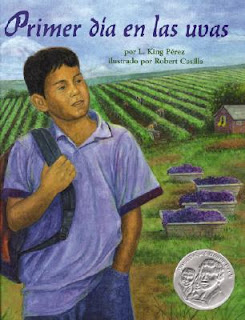
One of the first picture books portraying an African America child was THE SNOWY DAY by Ezra Jack Keats published in 1962. One of the first picture books depicting a Hispanic child was GILBERTO AND THE WIND by Marie Hall Ets published in 1963. But are these picture books really multicultural? The answer is no.
In THE SNOWY DAY, we see a happy Peter playing in the snow. In the same case, In GILBERTO AND THE WIND, we see a curious Gilberto playing with the wind. But are we reading about Peter’s or Gilberto’s cultures? No. We just see two children playing. If the writers/ illustrators had used a different name and had used another tone of skin color, we would have the same story. In this case the names and cultures of the protagonists do not affect the story at all.
This is one of the major problems that writers make when writing a multicultural picture book, a foreign name or skin color on a page is not enough to have a multicultural picture book.
BONESY AND ISABEL by Michael J. Rosen is the story of Isabel, an adopted girl from El Salvador. Her new parents bring her to the United States. In her new house, Isabel meets a new friend, an old dog named Bonesy. Isabel loves to play with her dog. One day, Bonesy gets sick and dies. Michael J. Rosen does a great job describing Isabel’s house and garden. The relationship between the dog and Isabel is lovely and tender. However, this story cannot be considered a multicultural story. The reader does not learn anything about Isabel’s culture. The reader only knows that she is from El Salvador. The story is just about the relationship between Isabel and the dog.
Rosen could have a multicultural story if he had concentrated more on Isabel’s feelings and reactions toward her new family and country. How does Isabel feel about leaving her country? What are her reactions to her new parents who do not speak her language? What would Isabel do to adjust herself to her new environment? What is she bringing to the family? What is she learning? These questions are never addressed in the story. Obviously, the writer’s intention is to write about a girl and an old dog, and he does a wonderful job with this. This story pretends to be multicultural by having a girl with a Spanish name who comes from a Latin American country. Unfortunately, this is not enough to consider this an authentic multicultural story.
I also had this problem when I wrote my first manuscripts. In one of my stories, I had a Latino child trying to find a gift for his mother. As a teacher, I had the privilege of meeting an editor at CABE (California Association for Bilingual Education). After reading my story she told me, “You don’t have a multicultural story." I was sure that my story was multicultural. The story was based on a real event. How come she said that my story was not multicultural?
The editor told me that she liked my story but that it was not a multicultural story at all. She gave me a hint on how to prove if a story is multicultural or not. If I changed the name of my character to an English name and eliminated the Spanish words, my story would still work. I did it and she was right. I understood that in my case a multicultural story is more than a Hispanic character and a few Spanish words. The story must be unique and authentic. It has to be a story that minority children can relate to.
A multicultural picture book must authentically and realistically portrays themes, characters, and customs unique to the minority group for which they are written. A good example IS FIRST DAY IN GRAPES by L. King Pérez.
For Chico, a son of migrant workers, places don't have names but rather are associated with whatever fruit or vegetable is being harvested. Chico has experienced first school days in artichokes and first days in onions, and now his first day in third grade would be in grapes. Chico is understandably apprehensive about starting third grade at yet another new school because his previous experiences involved bullying and name calling- maybe because he's always new, or maybe because he speaks Spanish sometimes.
This is a very common experience that immigrant children deal with at school. Chico does not want to go to school not because he does not like to study but because he does not fit in. Children laugh and bother him at school. Chico is the new boy, the migrant boy who works in the fields and who does not speak good English yet. Chico struggles to write in English at school but he his good with numbers. He can add and subtract numbers in a flash. His teacher, Ms. Andrews, admires his remarkable math talent and invites Chico to compete in the Math Fair.
Remembering his mother's advice to study hard in order to be someone important in the future and his newly recognized math talent, he stands up to the bullies and wins the respect of his new third-grade peers. When the bullies return at lunch, Chico stands up to them and challenges them with math questions until they retreat. With enough positives to compensate for the challenges, the child finishes his first day of the school year with a sense of pride and accomplishment.
This story resonates with migrant students and those who have moved frequently. For others, it's an insightful glimpse of another way of life and a reminder that different kids have different talents. The author presents an authentic story of the migrant child. L. King Pérez lets the reader see Chico’s experiences and his fears of not fitting in. This is a story that can touch not only migrant children but also children who do not have a permanent home. This is a multicultural story.



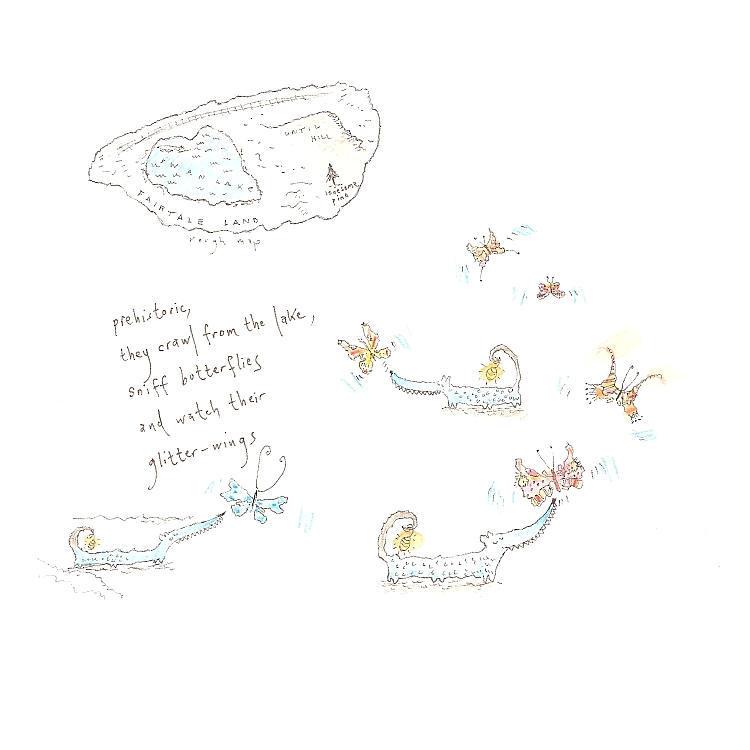
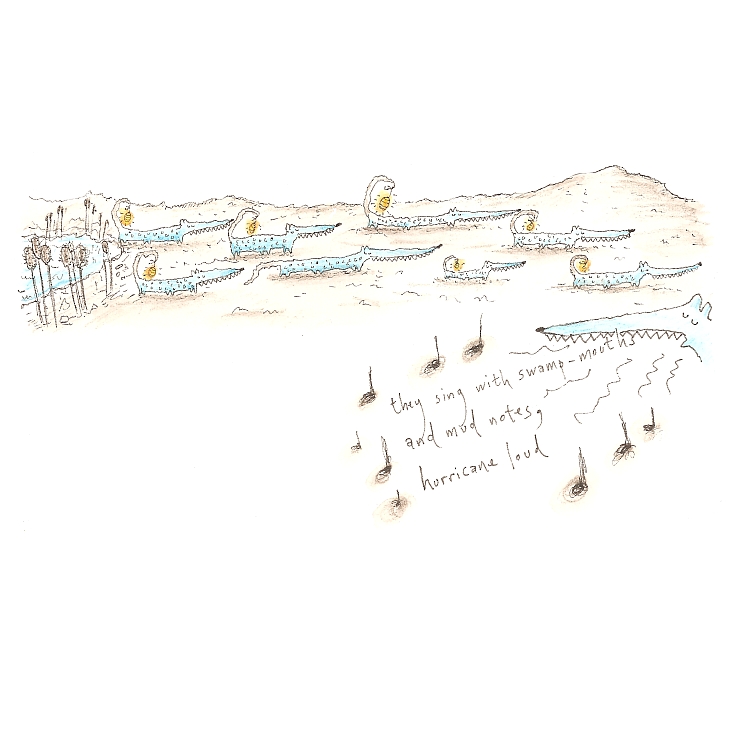
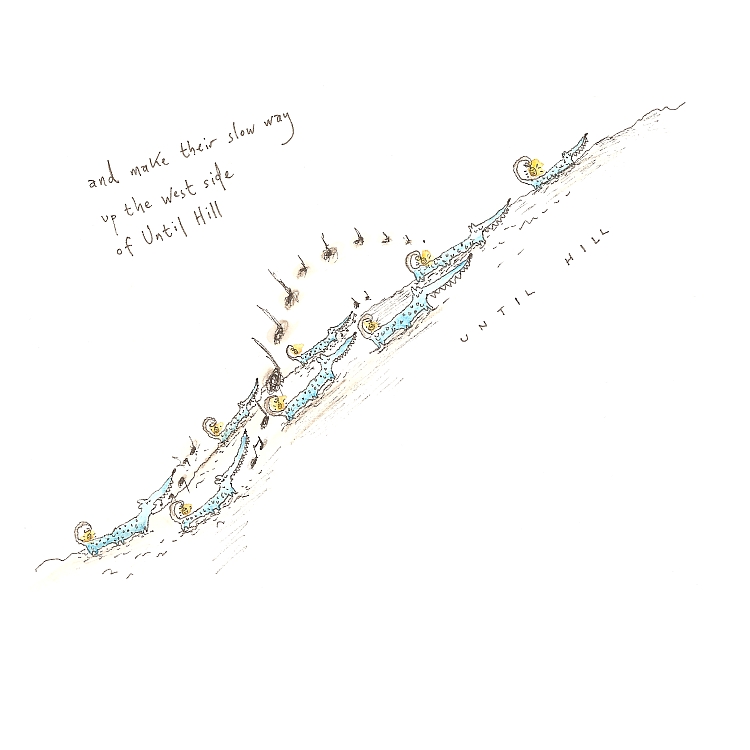
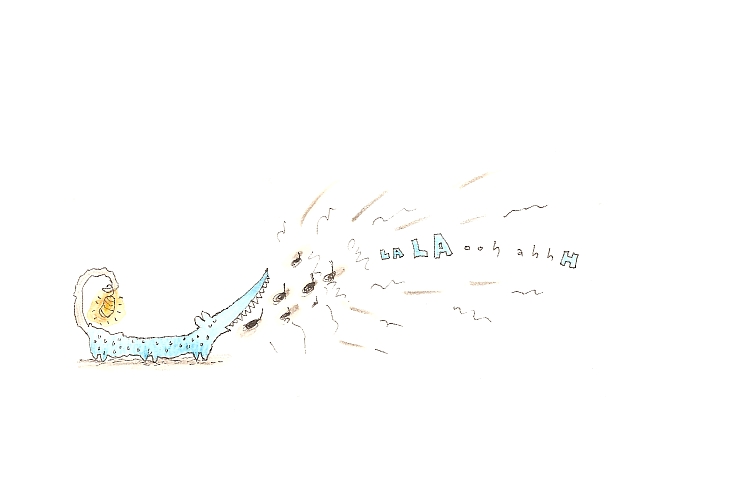

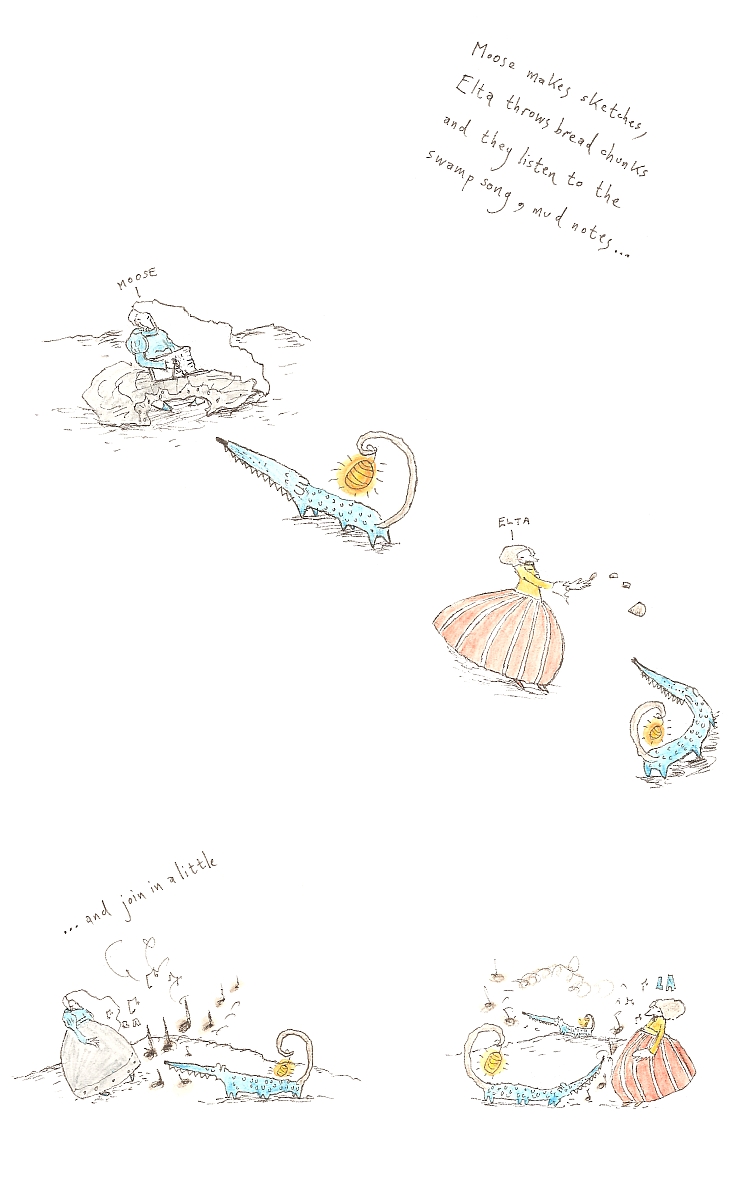
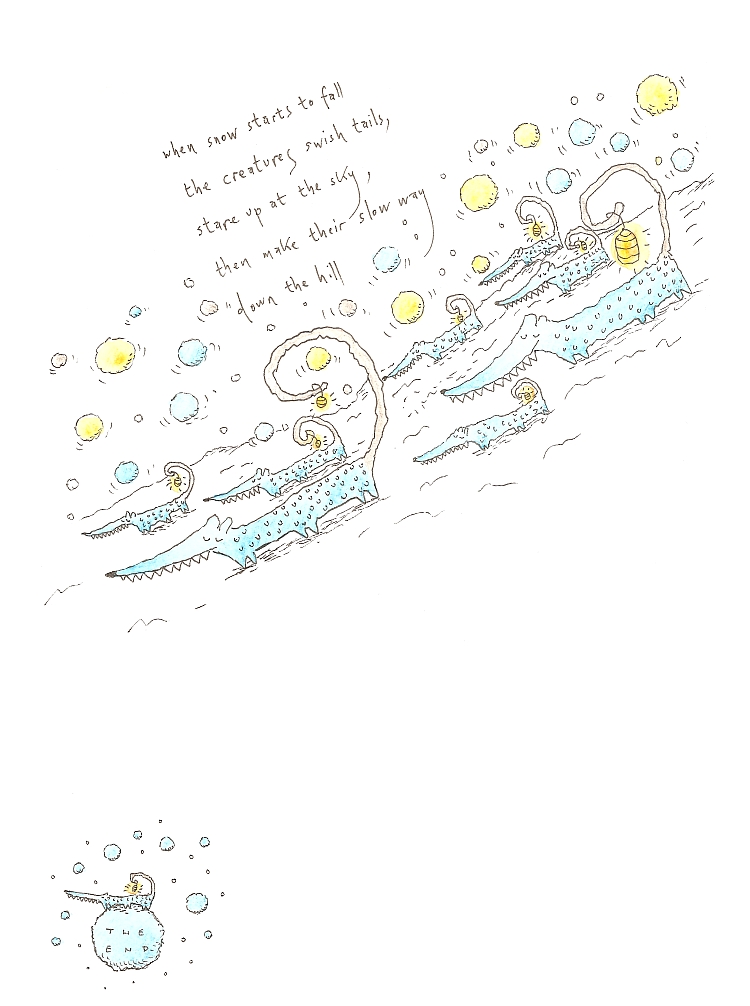





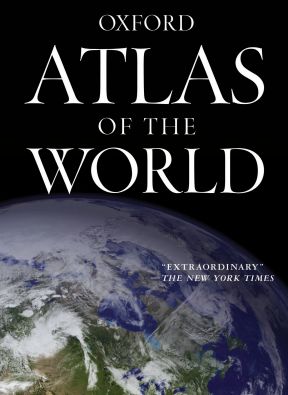
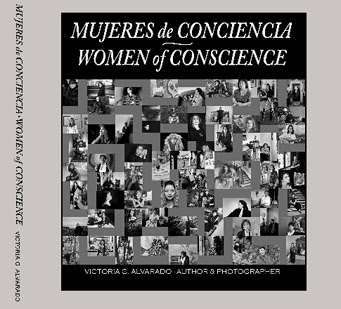

Love it.
great!!!!!!!!!!!!!!!!!!!!!!!!!!!!!!!!!!!!!!!!!!!!!!!!!!!!!!!!!!!!!!!!!!!!!!!!!!!!!!!!!!!!!!!!!!!!!!!!!!!!!!!!!!!!!!!!!!!!!!!!!!!!!!!!!!!!
Dreams and nightmares [for me, anyway].
Love it!